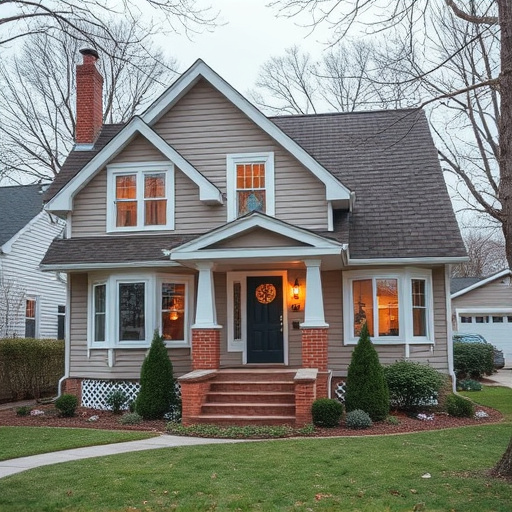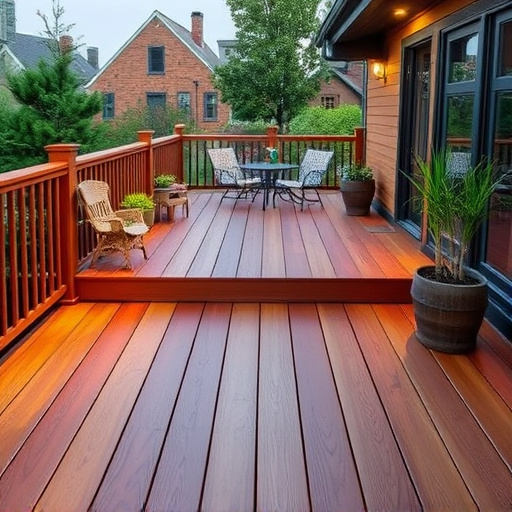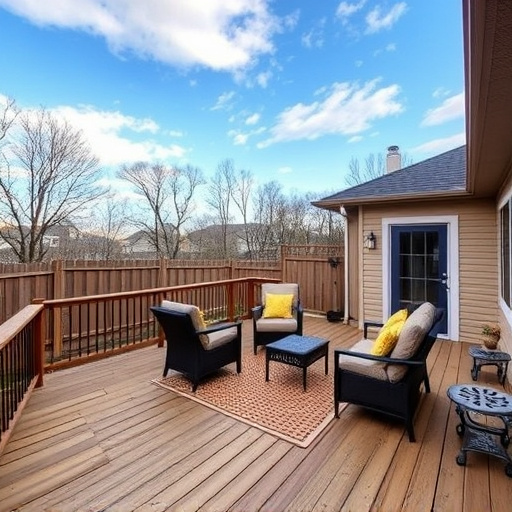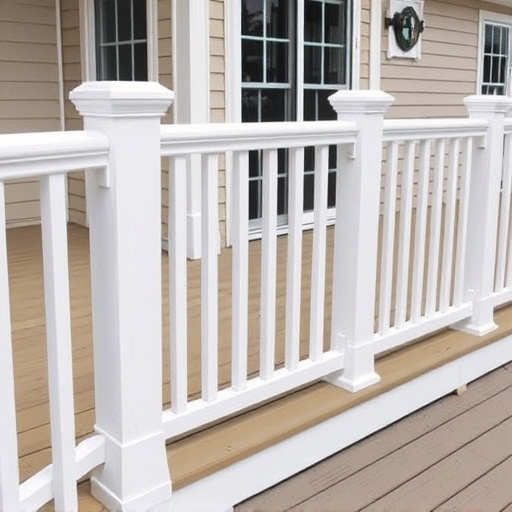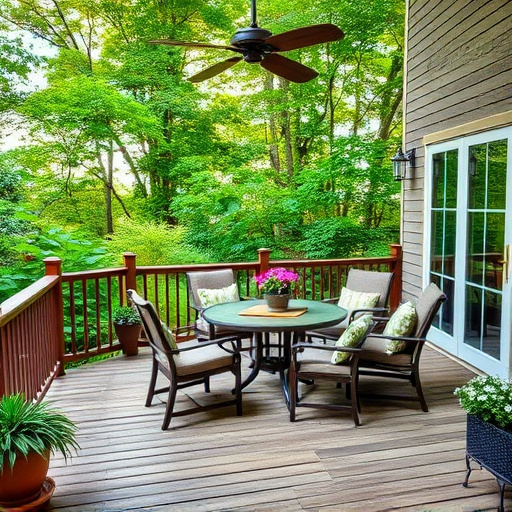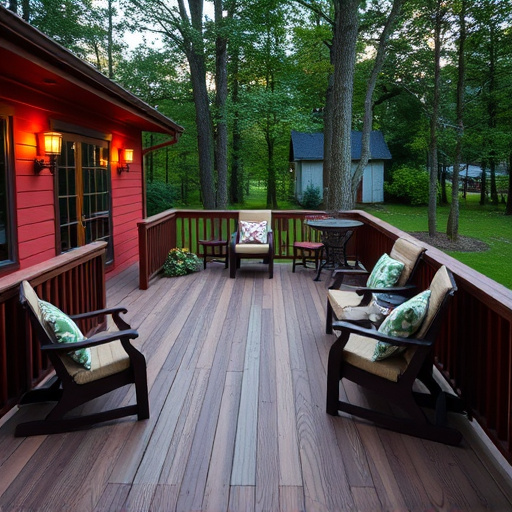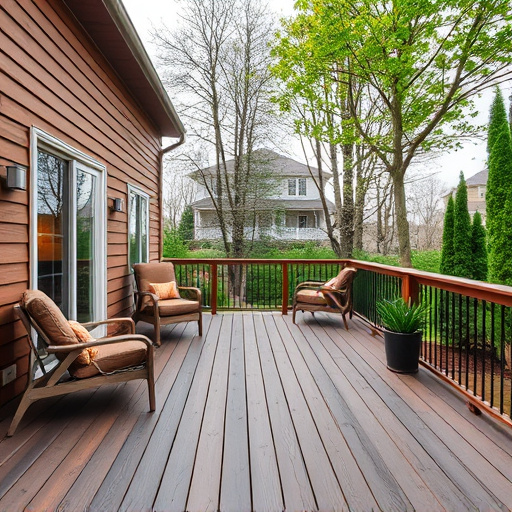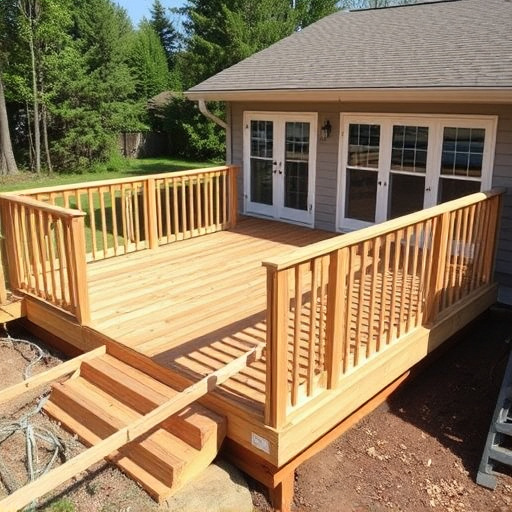In regions with extreme weather and high foot traffic, deck framing is crucial for safety and durability. Professional contractors design robust framing systems to support heavier loads, integrating residential siding and gutters for added protection. Selecting strong lumber or engineered wood products, proper joist spacing, and heavy-duty supports ensures structural integrity. Annual inspections, cleaning, and re-treatment protect against damage, preserving the deck's longevity and property value.
Deck framing that supports heavy loads and traffic is a crucial aspect of outdoor living spaces. This article delves into understanding the specific requirements for load-bearing decks, exploring key materials and design considerations to ensure structural integrity. We also cover best practices during construction and maintenance to promote longevity. Discover how expert deck framing techniques can create safe, durable, and aesthetically pleasing outdoor environments.
- Understanding Deck Framing Requirements for Heavy Loads
- Key Materials and Design Considerations for Load-Bearing Decks
- Best Practices for Construction and Maintenance to Ensure Durability
Understanding Deck Framing Requirements for Heavy Loads
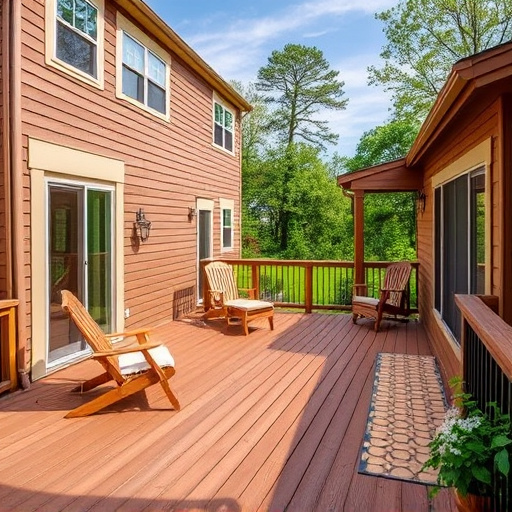
When it comes to deck framing, understanding the structural requirements for heavy loads is paramount, especially in regions with harsh weather conditions or areas prone to high foot traffic. A well-designed deck framing system is crucial for ensuring safety and longevity, particularly when compared to traditional construction methods. In residential roofing and siding projects, incorporating robust deck framing allows for the support of heavier structural elements, such as a larger deck surface area or additional features like pergolas or outdoor kitchens.
This is where the expertise of professional contractors comes into play. They meticulously plan and engineer the deck framing, considering factors like span lengths, load-bearing capacity, and material strength. Properly installed lateral supports and joists distributed at optimal intervals are key to managing loads effectively. Additionally, integrating residential siding and gutters seamlessly into this framework ensures not only aesthetic appeal but also helps in diverting water away from the structure, preventing potential damage caused by heavy rainfall or snowmelt.
Key Materials and Design Considerations for Load-Bearing Decks
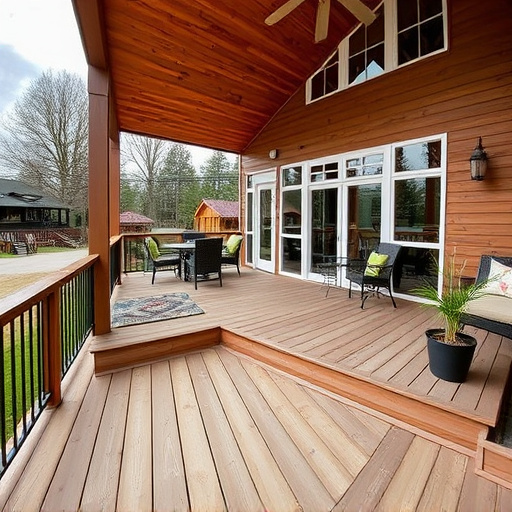
When designing a deck that supports heavy loads and high traffic, selecting the right materials is paramount. For load-bearing decks, structural integrity is key, making strong and durable lumber or engineered wood products essential components in any deck framing system. These materials provide the necessary strength to withstand significant weight and reduce bowing or warping over time.
Additional design considerations include proper joist spacing, which should align with manufacturer recommendations for the chosen decking material, and incorporating a robust support system such as heavy-duty beams and posts. For both residential and commercial applications, these home service solutions ensure safety and longevity. When planning exterior home improvements, especially in areas with frequent foot traffic or heavy furniture placement, prioritizing robust deck framing pays off in the form of a durable and safe space for years to come, enhancing your property’s value through quality exterior home improvements.
Best Practices for Construction and Maintenance to Ensure Durability
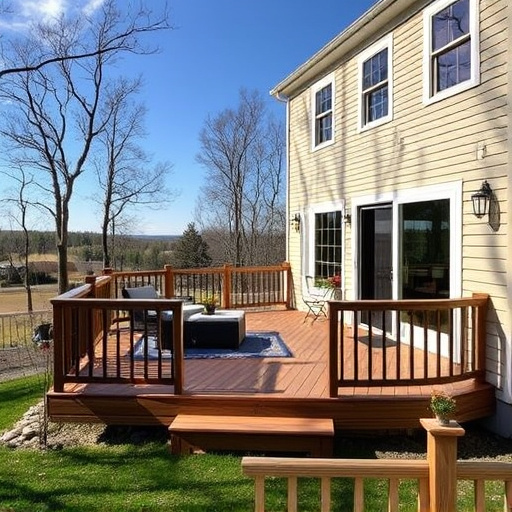
When constructing a deck that supports heavy loads and traffic, adhering to best practices for construction and maintenance is paramount to ensure durability. First and foremost, use high-quality materials suitable for bearing significant weight. This includes selecting robust framing lumber treated against rot and pests, as well as sturdy fasteners and connectors designed for structural integrity. Proper spacing between joists is crucial; follow industry standards to prevent excessive sag and ensure the deck can withstand regular wear and tear.
Regular maintenance is equally vital. Inspect the deck framing annually for signs of damage or deterioration, addressing issues promptly with storm damage repair if necessary. Keep the deck surface clean and free from debris to prevent water damage that can compromise the structure over time. Consider periodic re-treatment of wood to protect it from elements, ensuring your home exterior services remain in top condition. Additionally, for roofing and siding adjacent to the deck, use weatherproof materials to create a protective barrier against moisture intrusion, enhancing the overall longevity of the structure.
When constructing or renovating a deck that supports heavy loads and high traffic, adhering to proper deck framing techniques is paramount. By understanding the specific requirements, selecting durable materials, and implementing best construction and maintenance practices, you can ensure a safe, sturdy structure that stands the test of time. Optimizing your deck framing enhances both the structural integrity and longevity of the space, allowing it to serve as a robust and inviting area for years to come.




